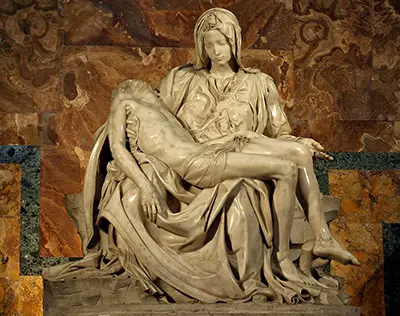The transition of the five hundred some odd years between Michaelangelo and Rodin is so starkly symbolic of a “decay” in artistic values and ideals throughout history. When we look at Renaissance sculptures, we see a lot of very clean cut pieces of art that seem almost too perfect. The stone is smooth and cut completely, any traces of its original form almost completely lost to the polishedness of the figures. The godly themes of Michaelangelo’s work are almost translated in how perfectly and cleanly his pieces are cut. Even in the drafting process, his forms clearly have had a lot of work put into them, demonstrating meticulous attention to the most minute of details.

Meanwhile, Rodin’s pieces almost resemble what one would imagine Michaelangelo’s pieces looking like a couple thousand years down the road. The forms that were once stark and ethereal are now suddenly gross and molten-looking, as though one had poured battery acid onto the stones upon their completion. He is also very conscious of his leaving of the original form of the stone, the artist making sure that the clandestine form of his medium still gets some attention and is not neglected by the viewer. You’re almost forced to recognize that this was once a piece of stone, and that the forms we recognize as “perfect” and “godly” root themselves in imperfection. Rodin cared less about sanctity and more about humanity.


Leave a Reply
You must be logged in to post a comment.